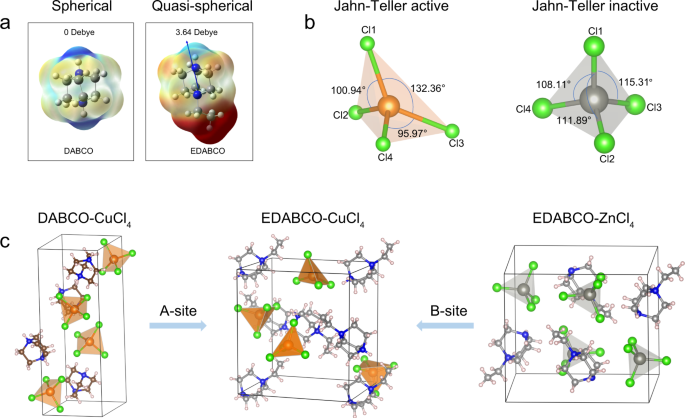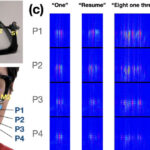2023-05-03 カナダ・ウォータールー大学

・ ウォータールー大学とトロント大学が、身の回りで発生する機械的な振動を電気に変換し、ペースメーカーから宇宙船まであらゆる機器のセンサーに給電する、低コストで安定した新材料を開発。
・ 圧電効果を通じ、機械的振動等の圧力が加わることで発電する。圧電効果は 1880 年の発見以来、水晶やロッシェル塩等の限れらた種類の圧電材料が水中音波探知機、超音波撮像やマイクロ波デバイス等に利用されている。しかし、商用デバイスに利用されている従来の圧電材料では、発電容量が制限されることと、環境や健康に悪影響を及ぼす鉛の利用が問題となっている。
・ 新材料は、結晶場での自発的な形状劣化に関わる化学概念のヤーン・テラー効果を利用した、edabco 塩化銅(N-エチル-1,4-ジアザビシクロ[2.2.2]オクトニウム)と呼ばれる金属ハロゲン化物の複合物で、極めて高い圧電効果を有する。
・ 新材料で作製したナノジェネレータでは、鉛や非再生可能エネルギーを使用することなく、人間の挙動から走行中の自動車まであらゆる種類の動的環境下で記録的な高エネルギー密度を達成した。
・ 同ナノジェネレータは、2.5cm 四方のサイズと名刺ほどの薄さであらゆる環境下で便利に使用でき、IoT に使用される数十億個ものセンサーを始め、様々な電子デバイスのセンサーへの給電に使用できる可能性がある。
・ 新材料の記録的な高性能は、この技術分野における新しい道筋を拓くもの。航空機の振動を利用した知覚モニタリングシステムへの給電や、心拍による発電を通じたバッテリーフリーのペースメーカーへの給電等の可能性も期待できる。
URL: https://uwaterloo.ca/news/media/engineers-tap-good-vibrations-power-internet-things
<NEDO海外技術情報より>
関連情報
Nature Communications 掲載論文(フルテキスト)
Large piezoelectric response in a Jahn-Teller distorted molecular metal halide
URL: https://www.nature.com/articles/s41467-023-37471-3
Abstract
Piezoelectric materials convert between mechanical and electrical energy and are a basis for self-powered electronics. Current piezoelectrics exhibit either large charge (d33) or voltage (g33) coefficients but not both simultaneously, and yet the maximum energy density for energy harvesting is determined by the transduction coefficient: d33*g33. In prior piezoelectrics, an increase in polarization usually accompanies a dramatic rise in the dielectric constant, resulting in trade off between d33 and g33. This recognition led us to a design concept: increase polarization through Jahn-Teller lattice distortion and reduce the dielectric constant using a highly confined 0D molecular architecture. With this in mind, we sought to insert a quasi-spherical cation into a Jahn-Teller distorted lattice, increasing the mechanical response for a large piezoelectric coefficient. We implemented this concept by developing EDABCO-CuCl4 (EDABCO = N-ethyl-1,4-diazoniabicyclo[2.2.2]octonium), a molecular piezoelectric with a d33 of 165 pm/V and g33 of ~2110 × 10−3 V m N−1, one that achieved thusly a combined transduction coefficient of 348 × 10−12 m3 J−1. This enables piezoelectric energy harvesting in EDABCO-CuCl4@PVDF (polyvinylidene fluoride) composite film with a peak power density of 43 µW/cm2 (at 50 kPa), the highest value reported for mechanical energy harvesters based on heavy-metal-free molecular piezoelectric.




